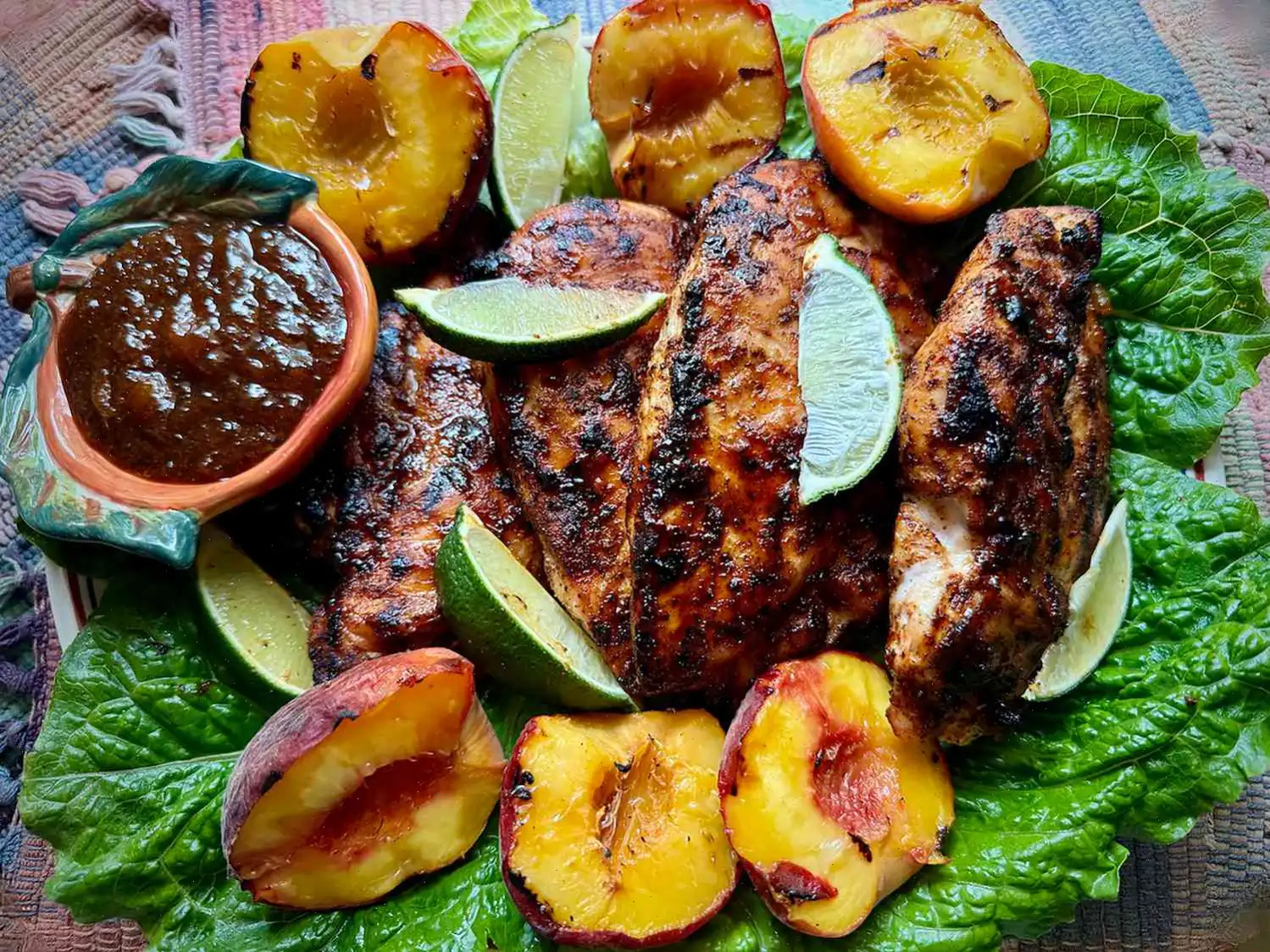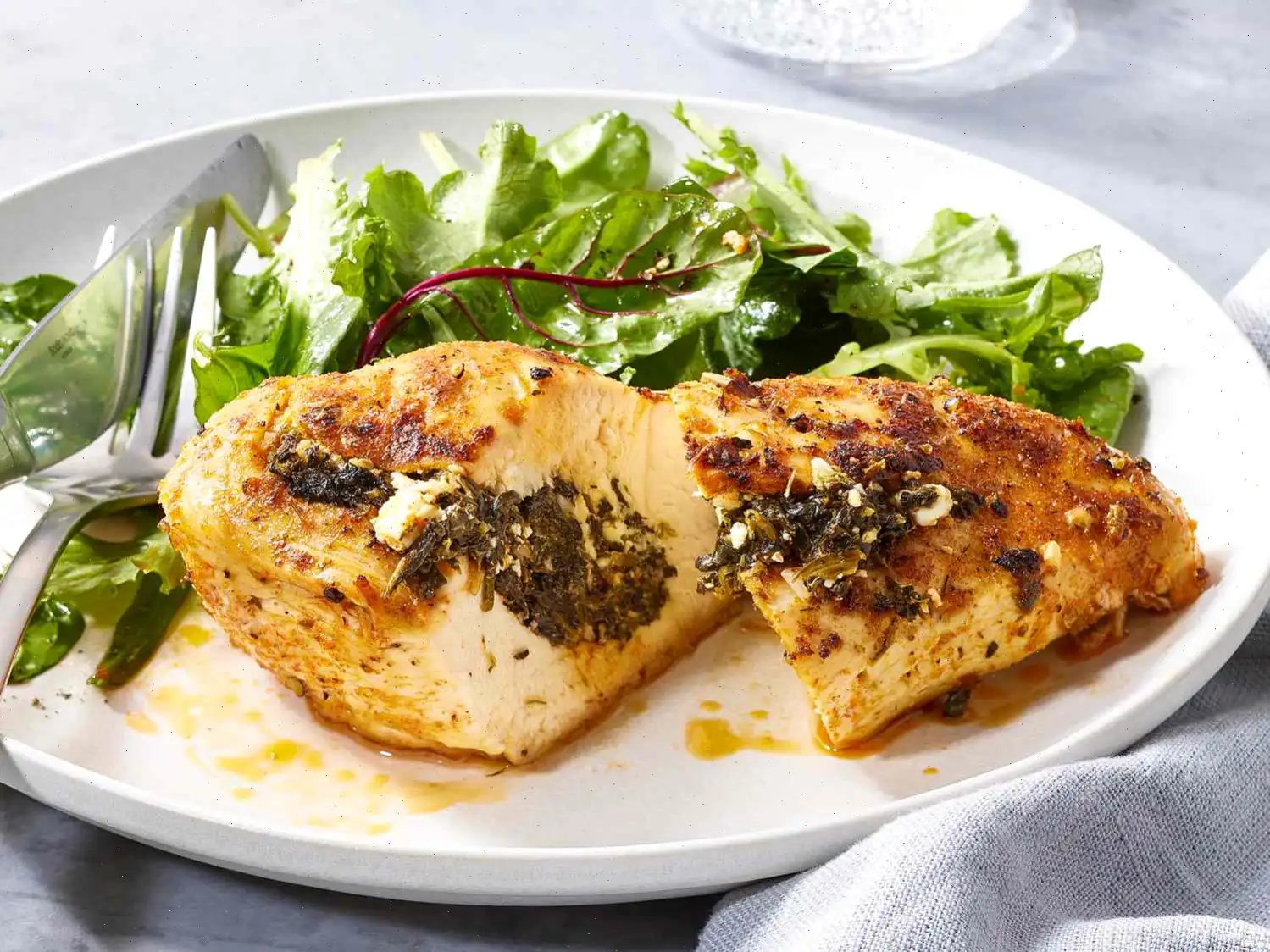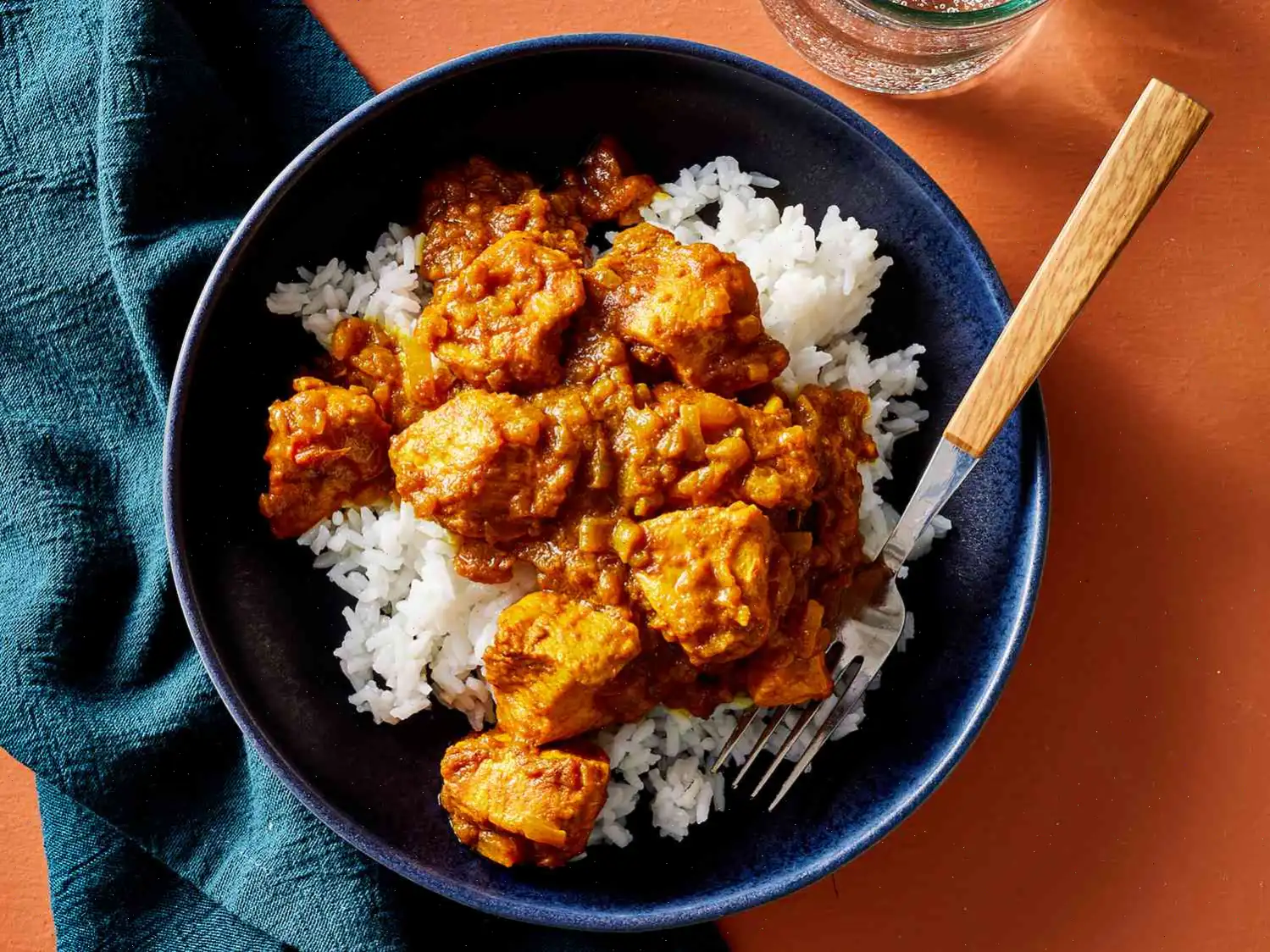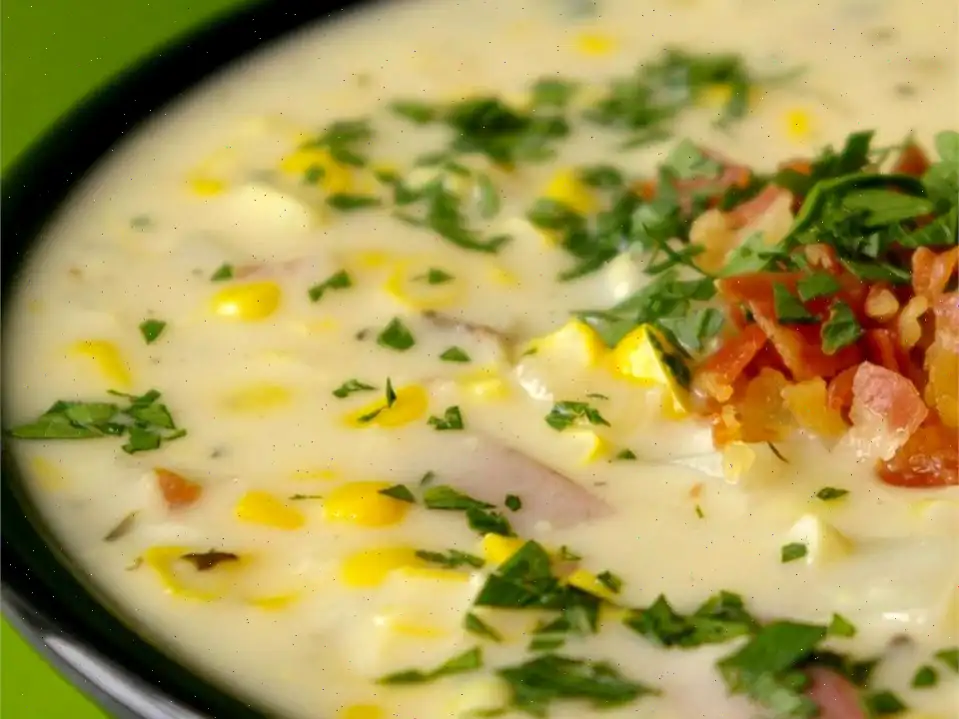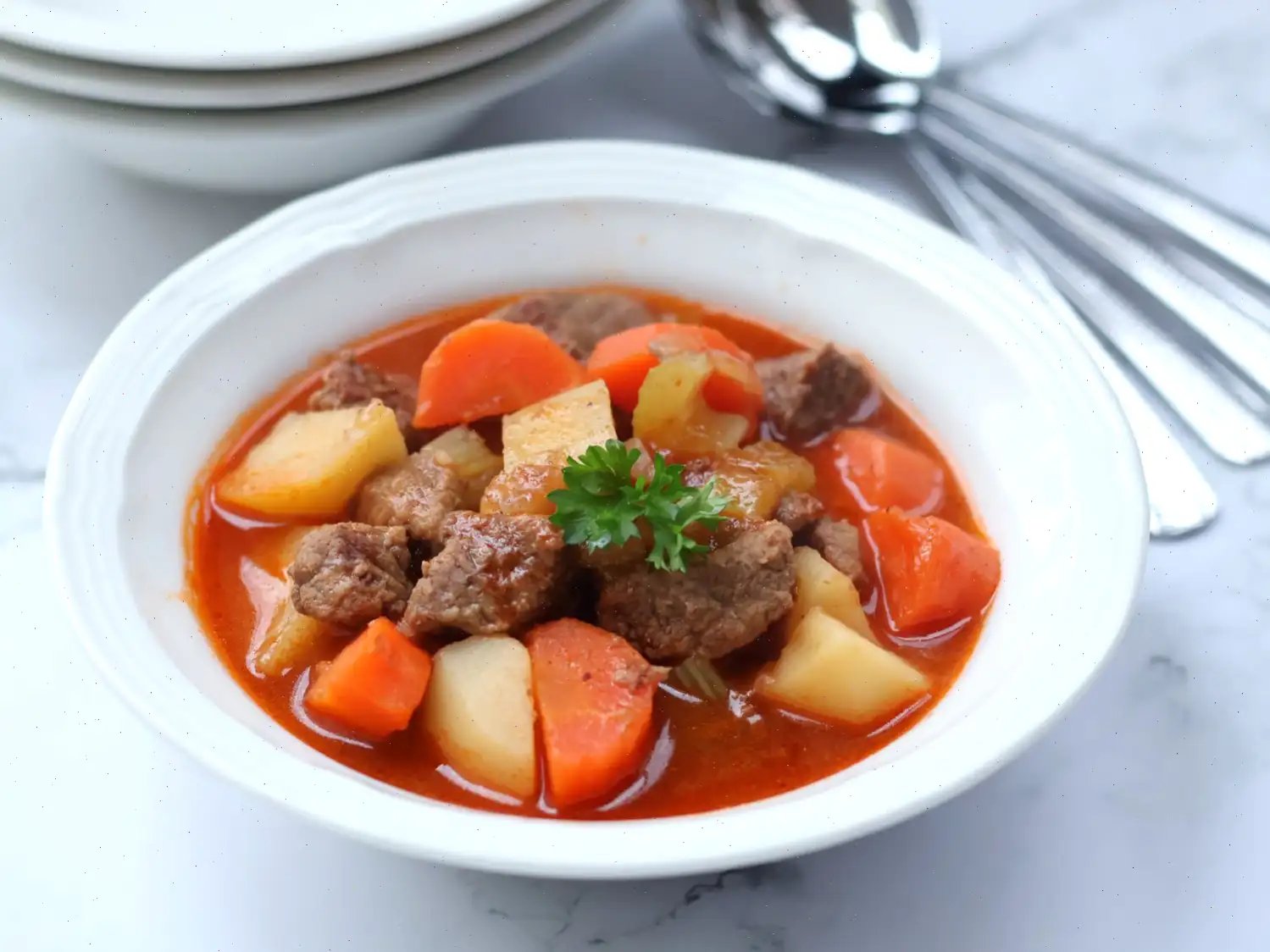
Cajun Deep-Fried Turkey Recipe
This recipe yields 12 servings. Cooking times and steps remain the same, regardless of the recipe yield.
Ingredients
- 2 cups butter
- 7 fluid ounces beer
- cup onion juice
- cup garlic juice
- cup Louisiana-style hot sauce
- cup Worcestershire sauce
- 2 tablespoons ground black pepper
- 1 teaspoon cayenne pepper
- 1 (12-pound) whole turkey, neck and giblets removed
- 3 gallons peanut oil for frying, or as needed
Directions
Step 1: In a large saucepan, melt the butter over medium heat. Once melted, add the beer, onion juice, garlic juice, hot sauce, Worcestershire sauce, black pepper, and cayenne pepper. Stir until all ingredients are well combined to form the marinade.
Step 2: Using a marinade injector or turkey baster with an injector tip, inject the marinade into the turkey. Be sure to inject it into the legs, back, wings, thighs, and breasts for an even flavor distribution.
Step 3: Place the turkey in a large plastic bag and refrigerate for 8 hours to overnight to allow the turkey to marinate.
Step 4: When ready to fry, remove the turkey from the bag and carefully place it into the cooking basket. Lower the turkey into the fryer to measure how much oil you will need. Once the amount is measured, remove the turkey and set it aside.
Step 5: Heat the oil to 365F (185C). Once the oil has reached the correct temperature, return the turkey to the cooking basket and slowly lower it into the hot oil using the fryers hanging device. Ensure that the turkey is fully submerged in the oil.
Step 6: Cook the turkey for 36 minutes, or 3 minutes per pound of turkey. An instant-read thermometer inserted into the thickest part of the thigh should read 165F (74C) to ensure the turkey is fully cooked.
Step 7: Once the turkey is done cooking, turn off the heat and slowly remove the turkey from the oil, allowing all the excess oil to drain from the cavity. Let the turkey rest on a serving platter for about 20 minutes before carving.
Cook's Notes
- The injector and instructions for frying came with our turkey fryer. It's recommended to follow the fryer manufacturer's guide, as frying a turkey has a few important nuances to consider.
- You can use an oven bag to marinate the turkey, but avoid using a kitchen trash bag.
- After frying, you can strain the peanut oil once it cools and reuse it. Just store the oil in a cool place (below 40F or 4C) or in the fridge until needed again.
Nutrition Facts
These values are based on the full amount of marinade used in the recipe. The actual values may vary depending on how much marinade is consumed. The nutritional information for oil is based on an estimated retention value of 10% after frying.
Per Serving:
- Calories: 1036
- Total Fat: 71g (91% DV)
- Saturated Fat: 30g (151% DV)
- Cholesterol: 346mg (115% DV)
- Sodium: 682mg (30% DV)
- Total Carbohydrate: 3g (1% DV)
- Dietary Fiber: 0g (1% DV)
- Total Sugars: 1g
- Protein: 91g (182% DV)
- Vitamin C: 5mg (5% DV)
- Calcium: 105mg (8% DV)
- Iron: 6mg (36% DV)
- Potassium: 989mg (21% DV)
* Percent Daily Values are based on a 2,000-calorie diet. Your daily values may be higher or lower depending on your calorie needs.

Origin of Cajun Deep-Fried Turkey:
The Cajun Deep-Fried Turkey has its roots in the Louisiana region, where the Cajun people, known for their distinctive culture and cooking techniques, first embraced deep-frying as a way to prepare turkey. This method was popularized in the 1980s, especially during Thanksgiving and other celebrations. While deep-frying turkey itself isnt exclusive to Cajun cuisine, the rich, bold flavors that characterize Cajun cookingsuch as cayenne, hot sauce, and garlicare what make this version stand out. The combination of marinating the turkey with a flavorful, spicy Cajun injection before frying has made this dish a Southern classic. This cooking technique, combining deep frying with a flavorful spice blend, creates an incredibly crispy skin and juicy meat that has become a favorite for many households across the United States.
Regional Variations:
Though the recipe for Cajun Deep-Fried Turkey originates in Louisiana, its popularity has spread across the U.S. and beyond, with some regional twists. In Texas, you may find versions that include local ingredients like chili powder or jalapeos for extra heat. In Alabama, they might opt for a citrus-based marinade with orange or lemon zest to balance out the heat. Despite these variations, the core flavors of the Cajun deep-fried turkeyspices like paprika, cayenne, garlic, and hot sauceremain central to the dish. Depending on the region, the type of oil used for frying can also differ. While peanut oil is a traditional choice for its high smoking point and flavor, some people may opt for vegetable or canola oil, especially in regions where peanut oil is less commonly available.
Differences from Similar Dishes:
What sets Cajun Deep-Fried Turkey apart from other methods of frying or roasting turkey is the use of a flavorful marinade injected directly into the meat. Unlike traditional roasting, which results in a slower cooking process with a more evenly cooked bird, deep-frying the turkey allows for quicker cooking times, resulting in a crispy exterior with moist and tender meat inside. The Cajun flavor profilespicy, savory, and sometimes smokydistinguishes it from other deep-fried turkeys, which may have milder seasoning. Additionally, the signature technique of frying in peanut oil adds a distinct flavor and texture that cannot be replicated with other cooking oils. This difference in preparation and seasoning is why Cajun Deep-Fried Turkey is considered a step above standard fried turkeys.
Where is it typically served?
Cajun Deep-Fried Turkey is a staple in Southern cooking, especially in Louisiana, and is often served at Thanksgiving, Christmas, and other large family gatherings. It's also a popular choice for tailgating parties, cookouts, and special events. The dish is typically served with Southern sides such as mashed potatoes, collard greens, cornbread, and gravy. In some parts of the South, its also paired with jambalaya, gumbo, or red beans and rice. The crispy skin and flavorful interior make it an ideal centerpiece for festive occasions where people gather to share in a meal. Whether served with a simple salad or a more elaborate spread, Cajun Deep-Fried Turkey is always the star of the table.
Fun Facts:
1. One of the reasons Cajun Deep-Fried Turkey became so popular is due to its cooking speed. Deep-frying a turkey typically takes only 3 to 4 minutes per pound, allowing for faster cooking than traditional roasting, which can take hours. This makes it a convenient option for large gatherings.
2. While the process of deep-frying turkey may seem intimidating, it has gained popularity in recent years due to improvements in frying equipment. Many modern fryers come with built-in safety features, making them easier and safer to use.
3. The tradition of deep-frying turkey in the Cajun style is not limited to just Thanksgiving; in fact, some families will deep-fry a turkey for any occasionbe it a Sunday dinner or a festive cookout.
4. There is an ongoing debate among turkey frying enthusiasts about the best oil to use. While peanut oil is the most commonly recommended for its high smoke point, some people swear by other oils like safflower or avocado oil for an even cleaner taste.
You can listen to this recipe in AI audio format. Simply click the play button below to listen to the content in a format that suits you best. It’s a great way to absorb information on the go!
FAQ about Cajun Deep-Fried Turkey Recipe
Comments
Stephanie Williams
01/11/2024 09:11:23 AM
Haven't had the chance to try out this recipe yet, but wanted to share a helpful tip. To determine the amount of oil needed, place the turkey in the cooking basket and submerge it in the pot filled with water until it's one inch above the turkey. Remove the turkey and basket, and measure the water level from the pot's top. This will indicate how much oil to use for frying your turkey. If the water level exceeds the recommended oil mark, the turkey is too large. Stick to a 12 lb or smaller turkey for best results. This method is neater than measuring in the oil directly. Remember to dry the turkey thoroughly, both inside and out, as well as the pot. Never leave the pot unattended. Enjoy your meal!
Aaron Thomas
04/03/2024 07:19:27 PM
An amazing taste that only gets better after 2 days. I made a small adjustment by using 1 tablespoon of Creole seasoning instead of cayenne to cater to kids and the elderly. I grated onion and elephant garlic finely, and then extracted the juice by pressing. I used one large onion and two heads of elephant garlic for an incredibly fresh flavor! Additionally, I opted for white pepper and injected the marinade 15 hours before cooking. I wouldn't recommend marinating for much longer as the meat turned out very tender, any longer and it might become grainy. I also enjoyed Mr. Barnett's review and cooked mine in a charbroiled oil-less turkey fryer, resulting in an awesome dish with minimal cleanup.
Samantha Gomez
10/25/2023 01:04:32 PM
Cautionary tale for first-time turkey fryers: Be wary of using a Cajun rub for your inaugural attempt. My first foray into frying a turkey ended in dismay when the bird emerged from the oil looking not just dark brown, but downright black – reminiscent of car tires. Initially crestfallen, my immediate thought was to salvage the situation by resorting to KFC. However, upon serving the turkey, to my surprise, it turned out to be the best I had ever tasted – a discovery of 'blackened turkey'. In response to escalating peanut oil prices and shrinking container sizes, I sought an alternative to traditional frying methods. My wife gifted me an oil-less turkey fryer from CharBroil, requiring only a small amount of oil for skin coating. This innovative appliance cooks the turkey swiftly and yields a similar flavor profile, all while eliminating the hazards of handling hot oil and the conundrum of its disposal post-use. I am thoroughly pleased with this practical and efficient cooking solution.
Elizabeth Garcia
11/15/2024 07:44:55 PM
I've fried well over a thousand turkeys since the 1980s, and it's a fantastic way to enjoy this bird without all the fuss. Simply heat the oil to 350°F, fry for 3 1/2 minutes per pound (until the turkey floats), and you're good to go. You don't need peanut oil unless you're frying a lot of turkeys, and there's no need for injecting anything either. Just take a thawed turkey, remove the neck/giblets, pat dry (avoid water), trim excess skin/fat, season with salt and cayenne pepper, and slowly lower into the hot oil upright. Keep everyone away during cooking (some may be tempted to touch the hot oil!). I prefer 10-12-pound birds, using a gaff to lift them when done. Wait for it to cool before slicing - always delicious. I used to cook up to thirty birds a night, but six at once was more common.
Ronald Torres
08/18/2024 09:35:40 PM
I experimented with this recipe last year, and it was a hit with everyone. My suggestion for handling the flames and oil is as follows: when inserting or removing the turkey from the fryer, carefully remove the fryer from the burner and place it on a heat-resistant surface like plywood. This precaution ensures that the fryer won't melt. Once the turkey is safely inside the fryer, you can return it to the flame to cook. Many frying accidents happen when the oil boils over and drips into the flame, but following this method eliminates that risk, making the frying process much safer. Enjoy your delicious fried turkeys!
Carolyn Mitchell
02/09/2024 04:13:16 AM
I used to buy pre-made injectors, but after cutting black pepper and reducing salt in our diet, I decided to try this recipe instead. I substituted white pepper and found garlic juice and onion juice at a larger grocery store after asking for directions. Taking advice from another reviewer, I made a half portion that was perfect for a 12-pound turkey. I opted out of using cayenne to avoid making it too spicy, and it turned out great for both adults and kids. To enhance the flavor, I added a bit of nutmeg, granulated onion, granulated garlic, prepared mustard, ground mustard, chili powder, and chipotle sauce. The family loved it, and we received rave reviews!
Amy Diaz
09/26/2024 09:54:09 PM
We first tried deep-frying turkeys in Austin, Texas a decade ago. Upon moving to the Florida Keys, we were introduced to Mojo Criollo, a traditional Cuban marinade. We strained it and used it as an injection, finding it far superior to commercial alternatives. To enhance the flavor, we created a mixture of mustard, Tony Cachere's cajun seasoning, and Worcestershire sauce, which we generously spread between the turkey's body and skin before letting it marinate overnight. I concur that determining the amount of oil needed by submerging the turkey in water is a more cost-effective method. Just ensure the turkey is completely dry before immersing it in the hot oil!
Jerry Robinson
03/14/2023 06:39:24 PM
After hearing many terrifying tales of house fires and severe burns caused by deep frying mishaps, I think it's a smart idea to take precautions when attempting this cooking technique. One tip is to measure the amount of oil needed by first placing the bird in the fryer and filling it with water until the bird is covered by at least an inch. Then, remove the bird and mark or measure the water level to avoid overfilling with oil, a common mistake in deep frying. Before lowering the turkey into the hot oil, consider preheating and drying it in the oven at 200-250 degrees for 15-20 minutes. When handling the hot oil, it may be wise to wear a raincoat, rubber gloves, and a clear face shield for added protection. Additionally, always keep the fryer away from any flammable objects, such as houses or trees, by placing it in the middle of your driveway. These precautions may seem excessive, but it's better to be safe than sorry when it comes to deep frying.
Joseph Robinson
10/18/2024 08:24:13 PM
I made a trial run with a "test turkey" before Thanksgiving to test out a new recipe, and I'm so glad I did! I followed the recipe but made a small substitution by using 1 tablespoon of Tone's Cajun Seasoning instead of cayenne, and the outcome was amazing! The turkey turned out incredibly flavorful, moist, and with just the right amount of kick. I even sprinkled some of the seasoning both on and inside the turkey. My family absolutely loved it. With Thanksgiving coming up and me hosting 12-14 people for the first time, I know this recipe will be a hit. -ChefPierre
Daniel Turner
02/23/2024 11:48:06 AM
I tried deep frying a turkey for the first time using this recipe about three months ago. I have to say, I received nothing but compliments. The skin did get a bit blackened, probably because I accidentally let the fryer heat get away from me after about half an hour. However, despite the dark skin, the flavor was still amazing. I used Guava IPA for the beer marinade and substituted onion juice with onion powder as a rub before frying since I couldn't find the juice anywhere. I'm excited to do this again tomorrow for Thanksgiving!
Emily Turner
09/22/2023 08:22:21 AM
I haven't tested out this recipe yet, but I plan to do so for Thanksgiving this year. I want to highlight that using an electric fryer with a closing lid is a lot easier and safer compared to the propane option. One of the benefits is the ability to cook indoors. Additionally, the fryer comes with a release valve for easy oil disposal back into its original container(s) once you're done. I've been frying turkeys for nearly two decades, and in my experience, this method is the safest and most straightforward approach to use!
Rachel Evans
04/25/2023 01:27:55 PM
I have been deep frying turkeys on Thanksgiving for many years now. It's always a crowd-pleaser with both family and friends. However, I must admit that I was a bit hesitant to use my turkey fry kit for the first time after having it for a few years. There's no denying the potential danger of having an open flame from the burner and hot oil involved. It's important to follow all safety guidelines to avoid any accidents and emergency situations. I personally enjoy injecting the turkey with various marinades for added flavor. Wishing everyone a safe and Happy Thanksgiving celebration!
Catherine Carter
12/08/2023 01:18:08 PM
This recipe was amazing and the Cajun seasoning ingredients can be used for any meat dish! Much appreciated!
Karen Wright
02/22/2024 11:34:13 AM
I tried out this recipe last year and will definitely be using it again this year. I hosted around 20 family members and friends, and every single one of them raved about how it was the best turkey they've ever tasted! There were even a couple of folks who typically don't enjoy turkey, but they ended up going back for seconds. Needless to say, there wasn't a single scrap left by the end of the meal!
Margaret Wilson
10/04/2023 04:22:00 AM
This recipe was fantastic and bursting with flavor!
Samuel Hill
07/20/2024 07:57:26 PM
I was pleased with this recipe, and my guests were delighted with the dish. However, I found that the bird was slightly overcooked. I observed that the temperature of the oil dropped when I lowered the bird into it, so I adjusted the fryer to increase the heat until the oil reached 350 degrees again. I'm uncertain if that was the correct approach.
Anthony Adams
08/25/2024 07:52:23 AM
I have prepared this dish with 2 turkeys for every Thanksgiving over the past 5 years, and it has always been a crowd favorite with all the leftovers eagerly devoured. I am extremely shocked that this recipe doesn't have more 5-star ratings. It is absolutely outstanding. If you are thinking of deep frying a turkey, I highly recommend trying this recipe - it is truly the best way to go about it.
Cynthia Green
02/27/2025 04:45:01 PM
I really enjoy this product. I switch between using this one and Emeril's Cajun blend, but I find this one to be very good as well.
Julie Campbell
06/10/2023 03:41:11 AM
I hadn't fried a turkey since 1999, but this time it exceeded my expectations. I used Toney Chachere's creole style butter marinade to inject the turkey and seasoned it with creole seasoning under the skin. The result was a remarkably juicy and flavorful bird.
Anna Anderson
08/11/2022 11:43:34 PM
We tried this recipe for the first time a couple of years back, and it has become our go-to ever since. I usually opt for Sam Adams or Guinness for the beer component to add an extra depth of flavor. We prepare two turkeys (our Thanksgiving tradition) by injecting them the day before and letting them marinate for up to 24 hours. When frying a turkey for the first time, it's crucial to use peanut oil for the authentic taste - other oils can alter the flavor profile. The rule of thumb is to fry the turkey for 3 minutes per pound. Ensure the turkey is completely thawed before frying and remember, despite the cautionary stories on the news, gently lower the turkey into the fryer instead of dropping it in. A 14lb turkey usually cooks in about 43-45 minutes using this method, resulting in a beautifully crispy exterior and juicy interior.



